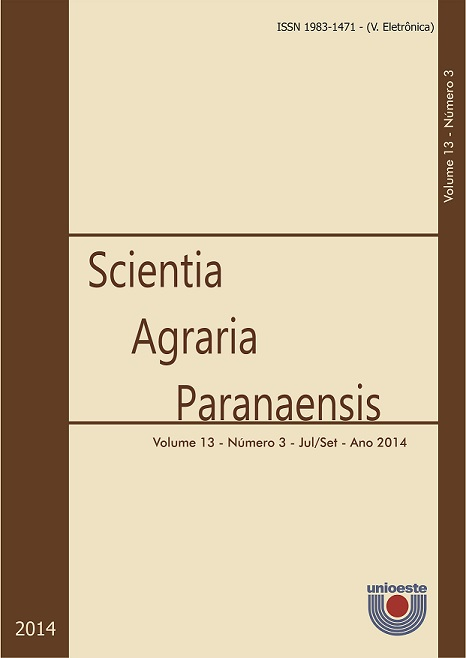ANALYSIS OF THE INITIAL GROWTH OF CASSAVA IN INTERCROPPING SYSTEM
DOI:
https://doi.org/10.18188/sap.v13i3.7498Keywords:
produção vegetal, agronomiaAbstract
One of the main reasons why farmers in different regions prefer polycultures is that very often you can get higher yields in an area sown in polyculture than in monoculture with an equivalent area. Thus in systems polycultures the plants are in a state of permanent competition causing a reduction in plant growth consorts. The competition affects the production quantitatively and qualitatively, because it changes the efficiency of utilization of environmental resources such as water, light and nutrients, settling between culture and plants of other species existing on site. This competition also occurs between individuals of the same species or between biotypes prevalent in the area. Thus, the aim of this study was to evaluate the growth of two cultivars of cassava intercropped with crops of corn, beans and green manure (gaundu dwarf beans). Treatments consisted of the consortium is cassava (Manihot esculenta), IAC-12, with green manure, dwarf pigeonpea (Cajanus cajan), maize (Zea mays) and beans (Phaseolus vulgaris) beyond cropping of cassava with and without weed control. The development of cultivars was negatively influenced by weed infestation. Cultivation in consortium with two cultivars of maize, beans and faba bean dwarf caused no significant effects on cassava as compared to the same crop grown in single system with weeding.
Downloads
Published
How to Cite
Issue
Section
License
Aviso de Direito Autoral Creative Commons
Política para Periódicos de Acesso Livre
Autores que publicam nesta revista concordam com os seguintes termos:
1. Autores mantém os direitos autorais e concedem à revista o direito de primeira publicação, com o trabalho simultaneamente licenciado sob a Licença Creative Commons Attribution que permite o compartilhamento do trabalho com reconhecimento da autoria e publicação inicial nesta revista.2. Autores têm autorização para assumir contratos adicionais separadamente, para distribuição não-exclusiva da versão do trabalho publicada nesta revista (ex.: publicar em repositório institucional ou como capítulo de livro), com reconhecimento de autoria e publicação inicial nesta revista.
3. Autores têm permissão e são estimulados a publicar e distribuir seu trabalho online (ex.: em repositórios institucionais ou na sua página pessoal) a qualquer ponto antes ou durante o processo editorial, já que isso pode gerar alterações produtivas, bem como aumentar o impacto e a citação do trabalho publicado (Veja O Efeito do Acesso Livre).
Licença Creative Commons
Esta obra está licenciada com uma Licença Creative Commons Atribuição-NãoComercial-CompartilhaIgual 4.0 Internacional, o que permite compartilhar, copiar, distribuir, exibir, reproduzir, a totalidade ou partes desde que não tenha objetivo comercial e sejam citados os autores e a fonte.


